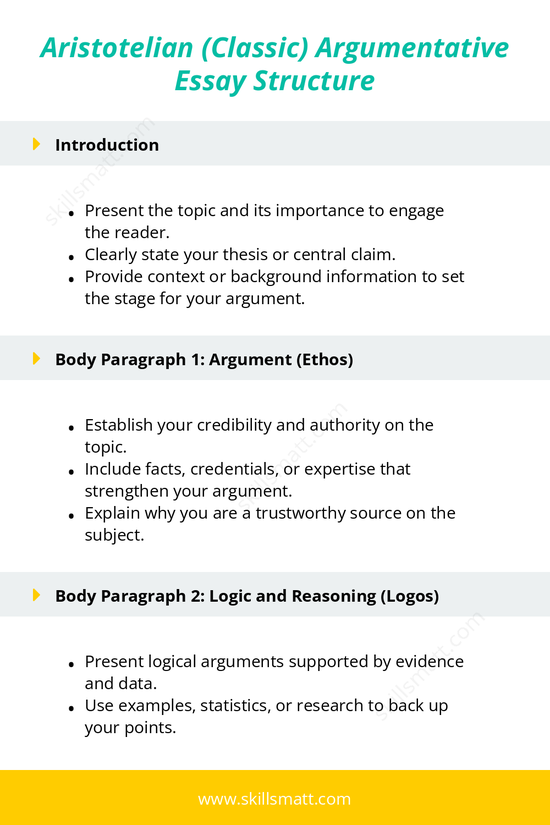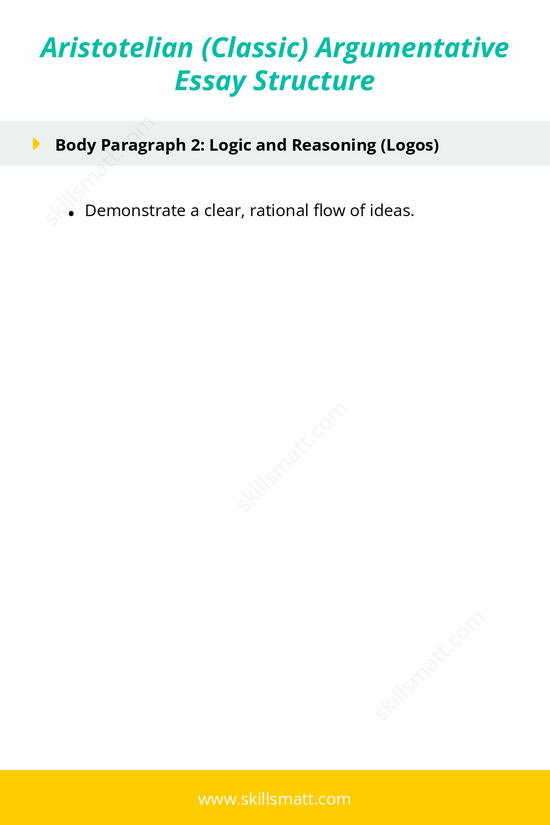Aristotelian (Classic) Argumentative Essay Structure
- Introduction: Present the topic and its importance to engage the reader. Clearly state your thesis or central claim. Provide context or background information to set the stage for your argument.
- Body Paragraph 1: Argument (Ethos): Establish your credibility and authority on the topic. Include facts, credentials, or expertise that strengthen your argument. Explain why you are a trustworthy source on the subject.
- Body Paragraph 2: Logic and Reasoning (Logos): Present logical arguments supported by evidence and data. Use examples, statistics, or research to back up your points. Demonstrate a clear, rational flow of ideas.
- Body Paragraph 3: Emotional Appeal (Pathos): Appeal to the reader's emotions by highlighting the human impact of your argument. Use storytelling, examples, or language that resonates emotionally. Connect the emotional aspect back to the central claim.
- Counterarguments and Rebuttals: Acknowledge opposing viewpoints or potential criticisms. Provide thoughtful rebuttals or refutations for these counterarguments. Show why your perspective is more compelling or valid.
- Conclusion: Restate the thesis in a fresh and impactful way. Summarize the main points made in the essay. End with a strong closing statement, such as a call to action or a thought-provoking idea.


